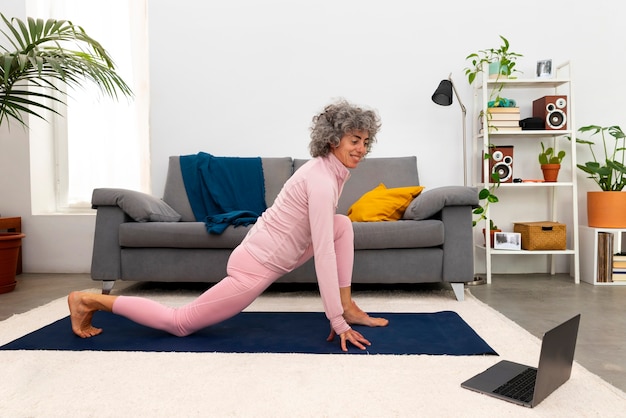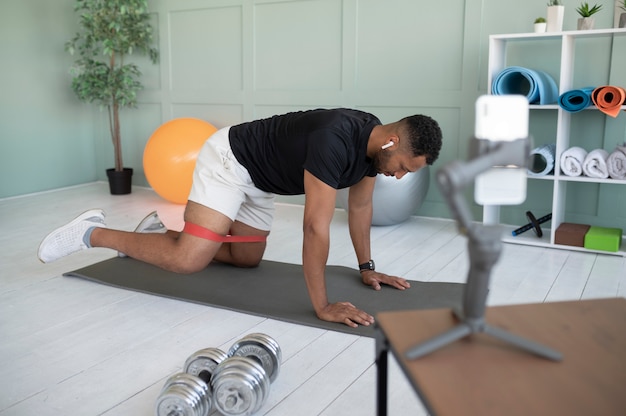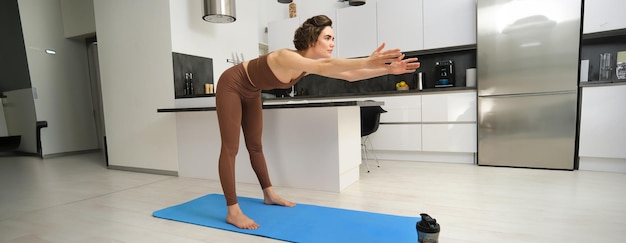Living with a chronic condition doesn’t mean giving up on fitness. In fact, regular physical activity is one of the most powerful tools for managing long-term health issues—from arthritis and diabetes to heart disease and chronic pain. For those exercising at home, knowing how to adapt workouts safely and effectively is key to staying consistent, avoiding injury, and improving quality of life.
Home-based exercise offers control, convenience, and comfort—especially important for individuals managing symptoms like fatigue, joint pain, or mobility limitations. Without the pressure of a gym environment, you can tailor your routine to your energy levels, symptoms, and schedule.
Studies consistently show that regular, low-impact physical activity improves blood sugar control in type 2 diabetes, reduces joint stiffness in arthritis, lowers blood pressure in hypertension, and enhances mood and sleep in chronic pain or fatigue conditions.

Use this comprehensive checklist to ensure your home workouts are safe, effective, and personalized to your condition.
Before starting any new exercise program, especially with a chronic illness, get medical clearance. This step ensures your chosen activities won’t interfere with medications, symptoms, or disease progression.
Begin with just 5–10 minutes a day. Gradually increase duration and intensity as tolerated. Overexertion can trigger flare-ups, especially in conditions like ME/CFS or lupus.
Keep a simple log of how you feel before, during, and after exercise. Watch for warning signs like chest pain, dizziness, excessive shortness of breath, or joint swelling. Adjust or stop if symptoms worsen.
Regular, gentle movement is more beneficial than occasional intense workouts. Aim for daily activity, even if it’s just 5 minutes of stretching.
Focus on low-impact movements that maintain joint mobility. Warm up with heat therapy before exercising. Use seated positions to reduce joint strain. Water-based videos or resistance band routines are excellent.

Combine aerobic and strength training to improve insulin sensitivity. Exercise 30 minutes most days, preferably after meals to help manage blood sugar. Monitor glucose levels if advised by your provider.
Stick to moderate-intensity aerobic activities like marching, cycling on a stationary bike, or step-touch routines. Avoid heavy lifting or breath-holding (Valsalva maneuver). Always cool down gradually.
Gentle movement breaks the pain cycle. Try short sessions of tai chi, yoga, or guided stretching. Focus on breathing and relaxation. Avoid pushing through pain—use the 'two-hour rule': if pain worsens hours after exercise, reduce intensity next time.
Begin with seated exercises or supported standing. Use chairs for balance during leg lifts or arm circles. Focus on building endurance gradually. Resistance bands allow strength training without joint stress.
You don’t need expensive equipment. A sturdy chair, resistance band, and comfortable shoes are often enough. Ensure your space is clutter-free and well-lit. Consider a yoga mat for floor exercises.
Set small, achievable goals—like exercising 3 days a week for 10 minutes. Use a calendar or app to track progress. Join online communities or follow guided videos to stay engaged.
Exercise is medicine—but it must be prescribed wisely when managing chronic conditions. With the right approach, home workouts can empower you to take control of your health, reduce symptoms, and improve daily function. Use this checklist as your foundation, listen to your body, and celebrate every step forward.

Wellness

Wellness

Wellness

Wellness

Fitness

Fitness

Fitness

Fitness

Health

Fitness

Fitness

Fitness

Health

Fitness

Health

Health